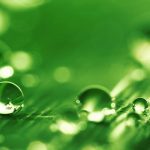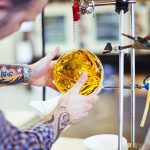I am often asked, “What is the “best” extraction?”
I have a suggestion that I presented in the past, and I assume the right to adapt and revise it.
Botanical integrity from seed to shelf
Efficacy of the process beyond efficiency, economics, effectiveness
Safety of people and product
Testing for confirmation
The foundation for the BEST extraction is testing of the material throughout the process. You can’t manage what you can’t measure.
There are four (4) testing technologies I would like to explore today:
- Gas Chromatography (GC);
- Thin Layer Chromatography (TLC);
- Liquid Chromatography (LC); and,
- Supercritical Fluid Chromatography (SFC).
All of the techniques in chromatography are based on the separation of a mixture into its individual components based on the chemical properties. The mixture is tested in many different conditions and the best separation for what the scientist requested to report is chosen.
I am not going to cover that part today, but assume that the “BEST” conditions have been selected. I will also focus on the cannabinoids in this case, but knowing that the techniques are used for molds, pesticides, terpenes, etc.
If we look at just some of the major cannabinoids, the key is the knowledge of the acids and the neutral forms of the components in the plant material represented in figure 1.
Figure 1. Major Cannabinoids synthetic profile.
Gas Chromatography, is a technique in which the compounds are volatilized and then detected in the gas phase. Because these are done at such high temperatures, the cannabinoids are decarboxylated in the process.
This places a restriction on the type of results possible. The acids, THCA and CBDA are not possible to analyze as they are converted to THC and CBD. This is a significant downside of the technique. For example, if a person is trying to determine if a THCA is fully converted to THC, this would not provide the answer for this question. The challenge is seen in the Figure 2.
Figure 2. Example for incomplete decarboxylation of THCA to THC at sub optimal temperatures. GC analysis would have given the same result and therefore not detected this situation. (Dr. Christopher Hudalla, ProVerde Labs)
The next technique to consider is Thin Layer Chromatography (TLC). In this case, the test provides a very qualitative result of material. With very careful technique, this can give a confirmation of the major components that are expected from the plant.
This is not a quantitative tool that gives accurate and precise results but is it better than not doing any testing at all. It is relatively inexpensive, and would have allowed us to know about the incomplete conversion in Figure 2, but not at any detailed accuracy and might not have seen the trace components of CBC, CBG and CBGA.
The main technique used today in testing labs, as well as in house testing, is Liquid Chromatography. This technique has a variation in the precision and accuracy of results. It is a factor considered for the resolution of the separation of individual components in a mixture.
I like to describe as being similar to the number of pixels in a photography. The lower the pixels the less detail. Both are photographs and show the picture, but as look at more and more closely, the less can see as well as the limitation of size of photograph.
This factor shows up when older technology is being used, versus the modern technology. This becomes an issue, when inaccurate results are being reported because two compounds are in one result. This is because the compounds are co-eluting. To be able to assure that all the compounds are reported, then the analysis time is quite long also. Note that the compounds would not be able to be separated in a short time, or would have been recorded in error is older technology had been used.
Figure 3. Analysis of 10 cannabinoid standards using sub-two micron chemistry in UltraPerformance Chromatography. (Mr. John VanAntwerp, Waters Corporation)
The technique that has been growing significantly is Supercritical Fluid Chromatography (SFC). This technique, uses CO2 as the main solvent versus acetonitrile or methanol in LC. At the end of the analysis the CO2 is volatilized and goes into ventilation, like CO2 in SFE.
The same basic theory of separation is seen in the other chromatographic techniques, however the resolving power, and the applicability for lipids and non-polar compounds, like cannabinoids, terpenes, triglycerols, etc., are significantly better with SFC versus LC, TLC and GC. A typical separation in seen in figure 4. It is important to note the addition of delta8 THC into the sample and how it is separated from delta9 THC.
 Figure 4. Analysis of 11 cannabinoid standards by sub 3 micron chemistry using UltraPerformance Convergence Chromatography (Mr. John VanAntwerp, Waters Corporation)
Figure 4. Analysis of 11 cannabinoid standards by sub 3 micron chemistry using UltraPerformance Convergence Chromatography (Mr. John VanAntwerp, Waters Corporation)
Why has SFC grown in significance? There are two reasons.
- One is the ease of sample preparation because the non-polar nature of cannabinoids.
- Second, is the desire to isolate the components of the extracted material.
One of the key parts of purification and isolation is the amount of solvent that needs to be eliminated after the purification. If we compare LC and SFC solvent requirements, the LC at 100 ml/min flow rate with ethanol: water mixture versus ethanol: CO2 mixture, we note that the CO2 vaporizes and are left with a small percentage (10 to 15 percent) of ethanol to remove.
This would mean that with the collection of a compound that is just 15 seconds from lift off to touch down, it would be 25 ml of ethanol: water mixture to evaporate from LC and less than 3 ml of ethanol from SFC as the CO2 vaporizes. This is a very attractive post purification step. Typically this just runs continually, so over a day, with a run every 10 minutes it would be six (6) times per hour for 24 hours or 3,600 ml of ethanol: water versus less than 450 ml of ethanol with SFC.
Figure 5 Example of automated collection using SFC of two major components and mixture of minor components (Dr. Christopher Hudalla, ProVerde Labs)
Summary:
All of the techniques are viable when they are “fit for purpose.” Testing is the foundation of knowing what is happening during the entire workflow. As more companies are driving toward the BEST for the industry, TESTING is a critical component of their process.
Using the technique of choice with an understanding of the boundaries is critical. It will provide the BEST results today and in the future.
Hope you extract the best from your day.
John A. MacKay, Ph.D., is the Senior Director, Strategic Technology at Waters Corporation. He earned a B.A. in Chemistry from St. Lawrence University, and Ph.D. from the University of Vermont in chemistry focused on the synthesis for cancer fighting molecules using a cyclic -phosphazene backbone. After positions teaching organic, biochemistry and analytical courses, at Davidson College, Lyndon State College and UVM as well as supervising grant based funded student research projects, John joined Waters Technologies in July, 1983. His career has included many roles in product development and now heads up the newly formed Strategic Technology team for the Americas Business Operations. He is widely recognized as scientific expert in application of supercritical fluid for extraction and chromatography across a wide application space including botanical space.
John can be reached at [email protected], or [T] +1 508 482 2104.









